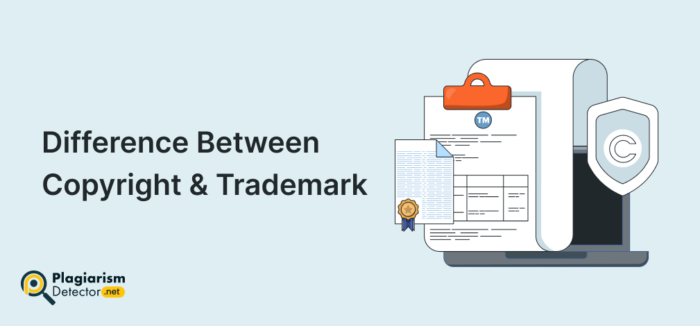How Accurate Are Plagiarism Checkers?

You may have used plagiarism checkers to verify your text for complete originality or accidental duplicate traces. But have you ever wondered how accurate such tools are? If so, and you’re still looking for a suitable answer to your question, you may want to stick around here.
In this blog post, we’ll explain how accurate plagiarism detectors are. To answer this question, we’ll first discuss how such tools work and then specify various factors that impact their precision. So, without wasting any time, let’s get down to business here.
What Is the Working Mechanism of Plagiarism Checkers?
You are curious about the accuracy status of plagiarism detectors, right? Well, you won’t be able to understand how different factors influence the precision of such utilities if you have zero knowledge about their working mechanism. For this reason, let’s first discuss how such tools actually work. And here is the simplest explanation of the multiple stages that take place at the backend of any popular advanced plagiarism checker:
Phase 1: Text Segmentation
When you process a text piece to check plagiarism with any cutting-edge tool, it first divides your input into various small chunks. This segmentation step allows the algorithms to analyze the content more accurately.
Phase 2: Database Comparison
Such a utility next relies on its algorithms that look for exact matches and paraphrased similarities. By using these algorithms, a sophisticated plagiarism detection tool compares each small chunk with the contents of its database.
Phase 3: Similarity Report Generation
If the algorithms’ output discovers similarities, the utility highlights that section. By repeating this process until the end, it generates a percentage score and links to the original sources.
What Is the Accuracy Status of Plagiarism Checkers?
There is no one-word answer to this question because the accuracy of plagiarism detectors depends entirely on various factors. Some of them are as follows:
Comprehensiveness and Size of the Database
You may know by now that every high-quality plagiarism checker relies on a database that is the foundation of its precision. So, one of the first and foremost factors impacting such tools’ accuracy is the database’s extensiveness.
For instance, most utilities only use public resources as the content of their database. This generally involves things like the following:
- Academic journals
- Books
- Websites
However, some also store the uploaded text in the repository associated with each individual’s account. So, when users check other content with such tools, they compare the input against the repository. That’s how they find not only plagiarism but also accidental traces of self-duplication.
Hence, the tools that use larger databases generally give more precise results than others.
The Advancement of Detection Algorithms
A comprehensive database undoubtedly paves the way for the accuracy of a plagiarism detection utility, but it’s the only factor. The precision of such a tool also heavily relies on the efficiency of its text analysis algorithms.
For instance, most basic plagiarism-checking utilities use algorithms that analyze text only by finding direct copies. Thus, such tools can’t flag wrongly paraphrased or rephrased content with missing sources as plagiarized.
On the other hand, some advanced plagiarism detectors rely on machine learning and natural language processing nowadays. The integration of advanced technologies empowers such utilities to identify the following:
- Exact matches
- Rephrased text
- Similar sentence structures
Therefore, tools that benefit from such a sophisticated algorithmic integration are generally more precise than other options.
Language and Formatting
Although most plagiarism checkers these days are advanced enough to work for multilingual content accurately, some still lack this feature. So, those lacking this skill set may be unable to identify plagiarism in a text piece based on some foreign language.
Additionally, some plagiarism-detection utilities rely heavily on the formatting of the content. For this reason, when they try to find plagiarism in a text piece having unusual formatting, they fail to work accurately. This is especially true for inputs that have been transformed from images to texts.
Maintenance and Updates
No matter what software application or tool you use, it will lose its accuracy if it doesn’t get updated with time. The same is also true for plagiarism checkers.
A plagiarism detection utility works entirely with the help of algorithms and databases. So, if such a tool doesn’t improve its algorithms or update the contents of its database over time, it will lose its precision. For this reason, the utilities that stay constant in this ever-evolving digital space generally offer less precision than others.
Some Exceptions
People believe that plagiarism detectors that strictly find even the most minor hints of duplication are entirely accurate. Well, this is partially true. That’s because not every duplicated piece of information falls under the criteria of plagiarism.
For instance, common knowledge statements, such as the ones related to widely recognized cultural references, well-known historical facts, and scientific truths, generally do not require any citation. Here are three examples of such information:
- The Earth orbits the sun
- The sun sets in the west
- Water freezes at 0 degrees Celsius
Beware! Plagiarism Checker vs. AI Detector: What’s the Difference?
Beware! What is Self Plagiarism? How to Avoid
So, if you don’t mention original references while discussing the aforementioned details in your work, you won’t become a victim of plagiarism. Yet, some plagiarism-checking tools mark such statements as plagiarism. So, you can’t consider such utilities to be totally accurate. Instead, they fall under the criteria of ‘highly sensitive plagiarism checkers.
Wrapping Up
To sum up the entire discussion conducted here, we just want to say that plagiarism detectors are incredibly helpful. They do offer a reliable way to catch blatant copying. However, their accuracy depends highly on the tool’s database, algorithm, and the nature of the content. For instance, some utilities fail to work for technical content pieces, such as the ones related to specialized niches or those containing text, graphs, and images. So, in order to ensure total originality, it’s best to use advanced plagiarism checkers. That’s the only way to maintain the integrity of your work confidently.




